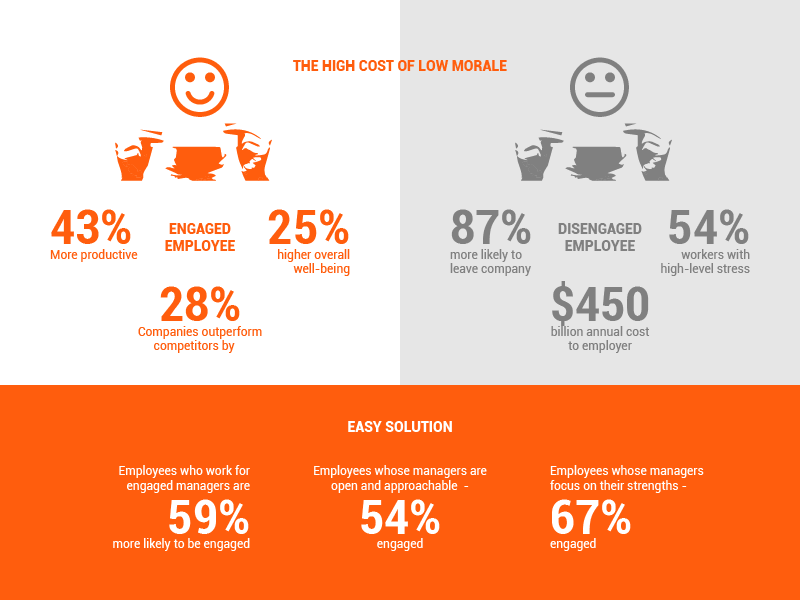I won’t be using the term “leader” in this post because manager ≠ leader. But that’s for another time …
Where are they?
I never really saw my managers when I was an operations employee – unless something was going wrong or the place was REALLY busy. Because I never got into trouble (humble brag), I was never summoned to “the office” and therefore ended up with little time to talk to managers about my work and long-term career interests. Any time I did get usually required me to stay after work or come in on an off day to accommodate a particular manager’s schedule.
Becoming a manager helped me somewhat understand why my managers were often nowhere to be seen. Yes, there were a handful who found creative ways to hide from the operation, only showing up when directly called upon. Most of them were just busy with other tasks. Guest situations. Attraction downtimes. Schedules. Payroll. Inventory. Projects. Piles and piles of manager stuff. Were they prioritizing their time effectively? Yes and no. Did increased automation help? A little. But managers still just didn’t have time or energy to really focus on their employees, especially when outnumbered by 20:1 or more.
The employees’ manager …
I overcame this challenge after being promoted for the first time at age 19. I soon became the “employees’ manager.” You know the one. The manager people ask to speak with regarding their career paths. The one who sets up team activities. The one who is assigned to support the interns. The one with a pile of employee resumes to review on his desk. The one who gets pulled into drama early and often. How was I able to focus on my employees AND handle the operation when other managers couldn’t? Yes, I was super efficient and great at prioritizing my effort. But that wasn’t enough. So, I just did it all after hours. I was a 7-day-per-week fixture for years. When I turned my radio off and stepped away from the operation, I went to work for the employees – adding another 10 to 20 hours to my week. Sure it worked, but it wasn’t a sustainable or scalable strategy.
Going backstage …
Shifting to L&D changed my working landscape considerably, and I was often partnered with my managers on projects. However, I continued to hear about “missing managers” from friends in operational roles. The issue also surfaced in L&D work when attempting to engage frontline management for help. They were too busy or had conflicting priorities that pushed learning to the bottom of the list. I could never blame managers for being difficult to engage. After all, I had been there. I knew they were being held accountable to specific results, and that often required them to dedicate the majority of their time to a pile of tasks rather than the long-term development of their people.
Any of this sounding familiar yet?
We still have a problem …
So I can’t blame managers. I won’t even blame the companies for staying focused on results while adhering to legacy organizational structures. But we still have a problem that needs fixing! Everyone is being asked to do more with less in the face of constant business disruption. Stability just doesn’t seem to be an option anymore – regardless of role or industry. This only contributes to the insanely low levels of employee engagement everyone keeps talking about as well as the skills gap that’s starting to freak out executives.
 From the Weekdone blog …
From the Weekdone blog …
It’s well past time to evolve the workplace – in this case the management role – to match the needs of today’s employees. There are a few noteworthy attempts out there, such as the Zappos holacracy. Tech companies and startups tend to be known for their flat working models, matching talent to task with little regard for hierarchy – at least in the beginning. Many companies have also restructured in recent years to reduce complexity and save costs. However, for the most part, the role of a manager is still basically the same job today as it was 50 years ago. Employees – and the business – continue to suffer.
An old new idea …
So what do we do? We could hire more managers. Not likely. We could slow things down a bit and give them extra time to focus on employees. Also not likely to happen anytime soon.
My suggestion: stop asking the same manager to focus on both operational tasks and people. Instead, take a book out of the task-to-talent playbook, and assign managers to a specific focus area based on their strengths and interests. No, this won’t solve all of our management problems, but I believe it could be a powerful step.
First, dedicate a management team to the day-to-day needs of the business. Let’s call them the “ops team.” This group would handle the operational environment, customer needs, logistics, and related projects. Meanwhile, the second team – the “people team” – would be dedicated to the organization’s employees. Employees would engage this group for support with unique work and personal issues. More like a dedicated coach than a normal manager, they would also handle individual needs like development planning, performance improvement, and dispute resolution. This could be extended to included other workforce management responsibilities, such as recruitment, training and hiring. Capacity could be shifted as needed between the two groups due to overlapping skill sets, especially during high-volume periods. However, the majority of time would be dedicated to their specific focus area.
NOTE – If you work in a small business with limited staffing, this concept may not readily apply, as the manager(s) can likely balance operational demands as well as their employees’ needs. I’m really focused on complex organizations with large, potentially distributed workforces and heavy operational demands.
Isn’t this what HR does?
Similar but no. HR tends to handle enterprise-wide employee needs while local business partners help as needed with specific concerns. HR typically doesn’t have the capacity or familiarity needed to support individual employee performance in an ongoing way. This new management focus could strengthen employees’ connection to the central HR function and potentially limit the need for additional HR personnel within the business.
But what about …
This isn’t one of my newer ideas. I have suggested it in a few past roles. Of course, it’s a pretty big change for most organizations, especially the sizable enterprises in which I’ve spent my career. While I’ve been part of a few attempts to shift towards this type of model, the idea is often met with a pile of questions and objections that quickly stall progress, including …
Will this require more managers?
Not necessarily. I would expect the ops team to be larger than the people team based on the scope of day-to-day business needs. Depending on the size of your business, a single dedicated people manager may be able to cover everyone’s needs. If your in a large operation – like a theme park – people managers could cover the needs of employees across typically siloed parts of the hierarchy – or even multiple regions/locations – maximizing their capacity while limiting the need to add headcount. Of course, based on everything we know about the value of employee engagement and continued development, adding another manager to focus on these issues may well be worth the investment.
Does this mean operational managers won’t get to know their employees?
If they’re doing their jobs correctly, operational managers will still spend plenty of time with their employees in the context of the work. Their conversations and subsequent to-dos may vary considerable from the people management team, but they must still establish the connections necessary to form a successful, cohesive team.
What if no one wants to focus on …?
Too often, managers go “backstage” because they want to get away from the operation – not because they have a particular skill set that really fits the change in responsibilities. This may become the case when assigning managers to focus on either ops or people. It’s up to senior management to know the needs of their business and assign managers accordingly based on ability (and potential). Tenure and interest should not be the primary considerations. Rather, the demands of the business and employees must dictate right-fit assignment.
Wouldn’t this confuse employees?
Why would it? They already have their go-to managers for everything after all. This change would only formalize the idea and provide more centralized support resources rather than just managers who try to help out when they can find the time. However, it is essential to communicate manager assignments and areas of responsibility to all employees.
How would feedback work?
This is the tricky one. The ops managers will be witness to employee performance every day while the people managers are (in theory) slightly removed. If you think about, this problem already exists in large operations, where managers work different shifts and encounter different employees every day. In this new setup, a dedicated manager would be focused on each employee to ensure those operational overlaps don’t allow issues or needs to be forgotten.
Of course, ops managers should continue to provide coaching in the moment as they always have. When necessary, this must be communicated to an employee’s “coach” as part of their larger development picture. People managers should not be allowed to spend all of their time backstage. Rather, they must engage their employees in the operation as well, fostering a stronger connection between the two teams as well as a more cohesive look for the entire team. Right-fit processes and tools must be installed to support a complete feedback loop and ensure the management teams can feed information on employee performance to one another.
Getting started …
Even if you LOVE this idea, you can’t just flip the switch and get started. After all, look at the challenges Zappos has faced as they find their footing with a “radical” new management style. Here are a few suggestions for trying out this concept to determine if it makes sense for your organization:
- Talk to your management team. How would your team react to this idea? You won’t know unless you ask. It may not resonate immediately, but it may inspire them to look at their roles with a fresh perspective and consider new approaches to better serve employee needs.
- Survey your employees. Would your employees benefit from more attention, or would it go unused? Engage your employees and identify their real needs that may benefit from a dedicated people manager(s).
- Assign manager responsibilities in new ways. Maybe you can’t completely separate task management from people management, but you may benefit from reassigning manager responsibilities with a similar focus. Rather than delegating tasks based solely on past experience or interest, group them based on how they impact your people.
- Try it with 1 manager. Do you already have an “employees’ manager” (like I was)? Remove them from operational responsibilities and see what they can do with the added time/capacity to focus on your people.
What do you think? Would separating management of tasks from management of people improve the employee experience and – as a result – long-term business results? Have you seen this model in action? How did it work out?


